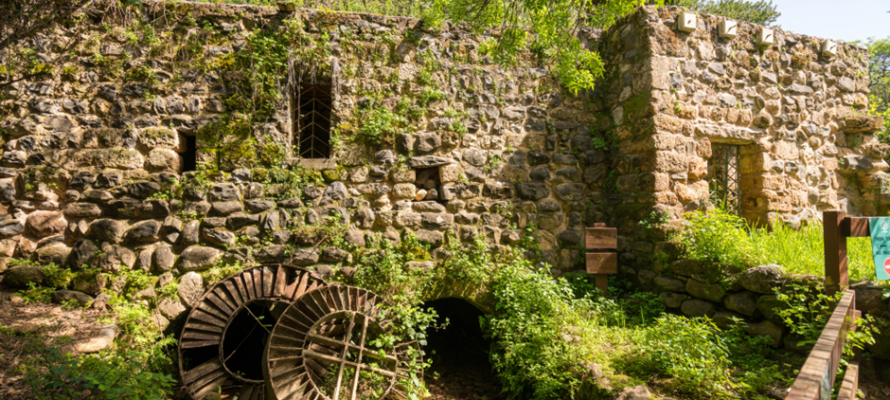“And Ben Haddad listened to king Asa, and he sent the captains of his armies against the cities of Israel, and he struck Ijon and Dan and Abel-Beth Maachah and all Kinereth with all the land of Naftali” (1 Kings 15:20)
By Nosson Shulman
We saw last time how King Jeroboam of Northern Israel set up a temple and alter dedicated to a Golden Calf at Dan, ultimately causing the destruction of Northern Israel as the people slid into idol worship. His son was overthrown by Basha, who decimated the house of Jeroboam. Subsequently, he went to war with Asa, the King of Judah. Basha took over Ramah, a city in Judah and was building a fortified tower that would have strangled trade in Jerusalem. Asa sent a bribe to Ben-Haddad, King of Aram, to attack Basha’s cities (which he did) destroying Dan (see 1 Kings: 15) and causing Basha to withdraw from Judah’s territory.
Under the infamous King Ahab the city was rebuilt, reaching its zenith with elaborate construction projects that tourists still walk through today. Indeed, most of the well-preserved ruins we saw are from this exact time period.
Just outside the city gate where much of the trade was conducted, an altar was set up for travelers (in ancient times; the fewer outsiders you had to allow in your city, the better. Next to it, one of the greatest archaeological finds in world history was discovered; the oldest ancient inscription (about 2800 years old) that mentions the “House of David.” This Stele was commissioned by the biblical King Hazael, King of Aram, whom Elisha had correctly prophesized would become King (see 2 Kings 8: 7-15). It describes his victory in a huge chariot battle over the alliance of King Jehoram of Israel (whose father Ahab built Dan) and King Ahaziah of Judah (these exact events are explicitly referenced in 2 Kings 9: 24-27). When the inscription was found referring to the “House of David”, several biblical minimalist professors (who incorrectly claimed that King David was as fictitious as King Arthur) were at a loss of words (today even in secular academia, the broad consensus is that this Stele is referring to the house of King David).
In the 6th century BCE, Tiglath-Pileser iii, King of Assyria, invaded the Kingdom of Israel and destroyed Dan (see 2 Kings: 15:29). In Greek times, the cultic site continued to be used. Indeed, a joint Greek-Aramaic inscription found by the main altar says “to the god who is in Dan (which helped archaeologists positively identify the site).”
In Roman times, the site was abandoned. In the 19th century, a flour mill was built that used the strong water currents of the Dan River to turn two millstones that ground flour. It was abandoned in 1948 when the Dan became an IDF military outpost (the Syrian/Lebanese border was on the other side, and thus too dangerous for civilians to walk there).
In 1967, the Golan Heights and Mount Hermon were liberated by the IDF, and as a result the Tel Dan nature reserve was opened to the public. Whether you wish to see amazing nature, one-of-a-kind biblical history, geopolitics or relaxing in refreshing water, this is one site you definitely would not want to miss!
Nosson Shulman is a licensed tour guide and trip organizer in Israel who specializes in History, Tanach (Bible) and Adventure Tours. For more itineraries click here. Check out our new Virtual tours including free sneak preview videos.
